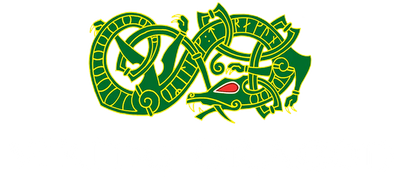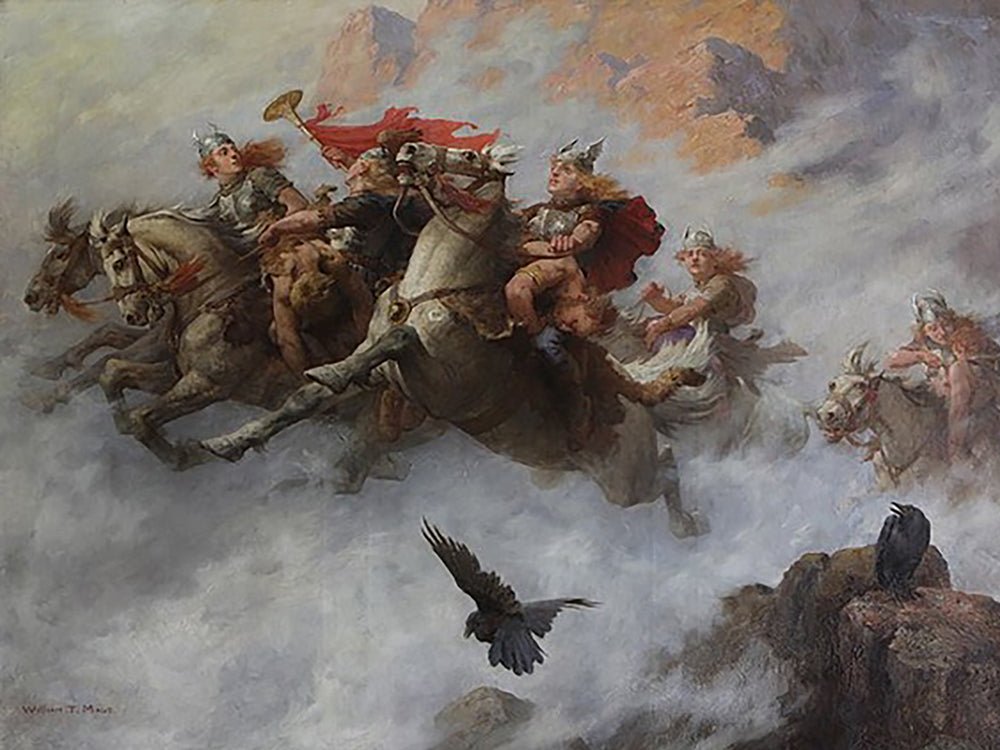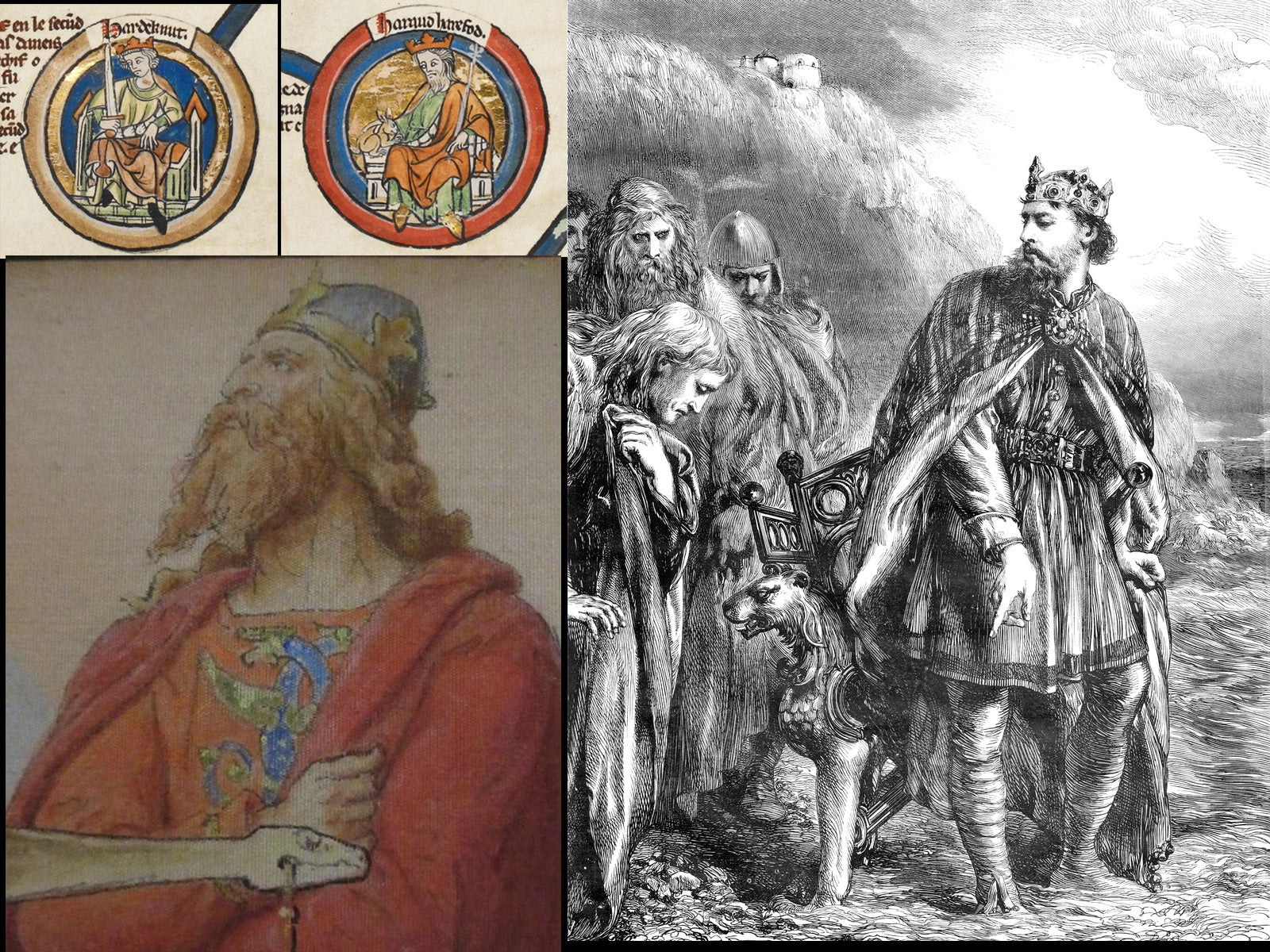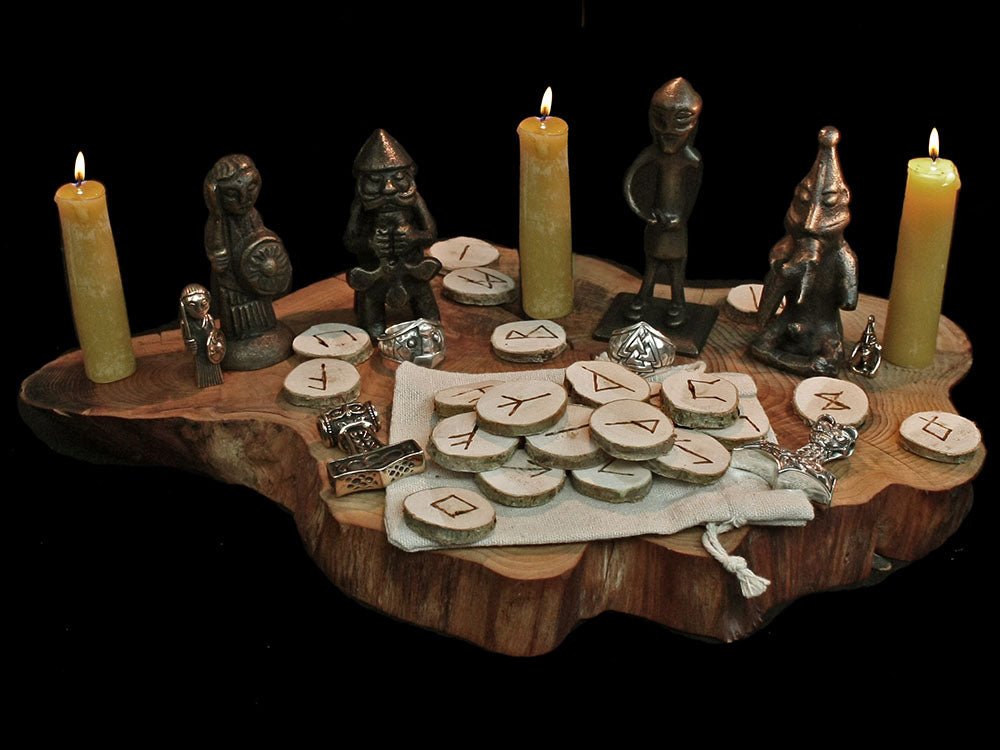
Norse mythology is rich in fascinating figures and enigmatic spirits, though few have enjoyed such a lively legacy as the Valkyries. Imagined as beautiful warrior women, riding gallantly through a battlefield, or watching from above on flying horses, these intermediaries between the gods and mortals continue to inspire storytellers a thousand years after the Viking Age.
Given the vivid imagery and drama of the Valkyries’ legend, it’s no surprise they continue to pop up in pop culture today. If you’re a fan of the Marvel comics, Xena: Warrior Princess or the God of War series, you’ll be familiar with the modern depictions of Valkyries (usually blonde, slender and armed with a smattering of girl power). But like most modern interpretations of Norse mythology, that’s not entirely true to the Viking Age legend, which itself evolved from different pre-Viking ideas.
Let’s have a look at the legend of the Valkyries: who they were, where they came from and their role in preparing for the end of the world.
Choosers of the Slain

The word ‘Valkyrie’ comes from the Old Norse for ‘Chooser of the Slain.’ This refers to the Valkyries’ crucial role in choosing which fallen warriors were worthy of a place in Valhalla and carrying their soul from the mortal realm to Odin’s halls in Asgard. In some stories, they can pre-determine which warriors will survive and which will fall on the battlefield, or even decide the outcome of battles before they have begun. It was believed that the Valkyries were able to see the true courage and honour in a man’s heart, making them able to choose those who had both exceptional skills in combat and the moral code of a virtuous warrior.
Given their role in deciding the fate of fallen warriors, to see a Valkyrie was an omen of war and bloodshed. They were said to ride fearlessly into battle on horseback, their magnificent armour shining in the sun. Some legends even tell of Valkyries riding wolves or boars, or flying above the battlefield to observe the scene below. In some instances, they’re said to
have wings or wear winged helmets and fly among a flock of swans or ravens.
An Evolving Legend

Just as the on-screen Valkyries that we see today are a departure from the Viking-age myth, the Valkyries that the Vikings believed in were quite different from their pre-Viking ancestors. It’s thought that the Valkyries’ legend evolved from an older Germanic idea of female war spirits, who gathered at battlefields and decided the fates of the warriors.
These were not the virtuous caretakers of slain fighters who captivated men with their beauty and carried them off to a wondrous afterlife. The pre-Viking Valkyries were dark entities with powerful, malicious magic which were seen as harbingers of bloodshed and misery. Our clearest depiction of these fearsome early Valkyries comes from Darraðarljóð, a poem in the Njal Saga. Here we find a description of twelve mystical women sitting beside the battlefield of Clontarf, weaving the fates of warriors on a loom made from intestines and weighted by severed heads.
Before the concept of Valhalla took hold in Norse mythology, the Valkyries’ choices for who would live and die were seen as capricious and unpredictable. With no moral code or promise of eternal glory to guide them, it seemed to warriors that their fate would be decided on a whim by an unknowable, unworldly being. As the idea of an afterlife for brave warriors was popularised in Viking folklore, the perception of the Valkyries changed. No longer agents of chaos, they had a specific task to choose the bravest and more honourable of fighters, shifting their image to become virtuous and noble.
It’s also likely that the Valkyries’ image was influenced by stories of Shieldmaidens: Viking women who fought in battle alongside male warriors. This may have spurred the Valkyries’ evolution from observers of war to active participants. The Valkyries’ are usually depicted as wearing armour and carrying spears, and are seen as a crucial force in Odin’s Ragnarok army. Some stories even tell of Valkyries fighting alongside their favoured warriors on Earth, influencing the outcome of battles not by magic but through force.
Becoming a Valkyrie

Just like the word Viking,’Valkyrie’ is a job description, not a race or a species. There are many instances in old Norse stories in which mortal women are chosen to become immortal Valkyries, though the hiring criteria that Odin uses to select these women are shrouded in mystery. It’s mainly believed that Valkyries were chosen along similar lines to warriors in Valhalla: they had to be fearless, skilled in combat, honourable and unwavering in their devotion to the God of War. There’s also some evidence that Valkyries may have been mainly chosen from Odin’s pool of Priestesses in Midgard.
Once a woman is chosen, she undergoes a transformation from mortal flesh to celestial being, intrinsically linked to the divine realm. Her heritage on Earth is left behind as she embraces a new role in Valhalla. In many tales of women becoming Valkyries, they’re even given a new name once they arrive in Odin’s halls.
However glorious or glamorous it might seem, life in Asgard came with a code of conduct which, if broken, could have a Valkyrie relegated back to the mortal realm. The most famous example of this happening is in the story of Brynhild, a renowned Valkyrie who was stripped of her immortal status after letting the wrong king die in battle. Not only was she turned back into a mortal woman, but she was placed into a deep sleep in a ring of fire until a hero came to rescue her.
Marriage, too, could relegate a Valkyrie back to the human realm. There are several stories in Norse mythology of Valkyries having to give up their place in Valhalla when they marry a mortal man. There’s also evidence that marriage could be used as a punishment for a Valkyrie who strayed from Odin’s service. In fact, in the story of Brynhild, Odin directly tells his former servant that she will live out her days in a mortal marriage, never again to fight victoriously in battle.





